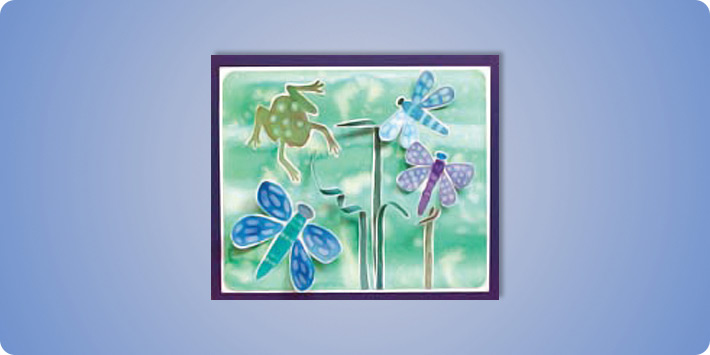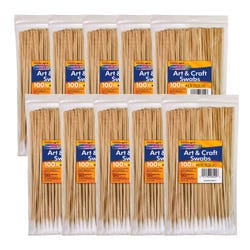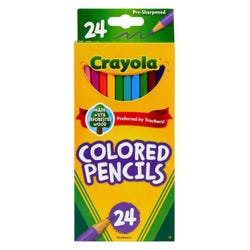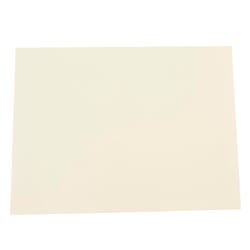Pond Patterns

Description
Ponds are little microcosms teeming with life. A study of pond life from books or from actual ponds will provide students with plenty of interesting subject matter for this fun approach to watercolor painting. Even the youngest students can experience success with the methods used.
Objectives
- Students will learn several techniques in watercolor to help them convey their ideas.
- Students will choose the particular subject matter of their painting to help communicate their ideas about ponds.
Supplies Needed
Crayola® Washable Watercolors, 8-Color Set 008190
Crayola® Colored Pencils, 24-Color Set 008220
Student Watercolor Paper, 18 x 24, 140 lb., Pack of 100 358445
School Smart® Watercolor Brushes, 72-Piece Set 248312
Art Utility Cups, 1 oz., Pack of 250 410715
Art/Craft Swabs, Pack of 1000 1328180
You will also need:
Pencils
Glue
Lemon juice
Sponges
Plastic containers for water
Paper towels
Standards
CONTENT Standard #1: Understanding and applying media, techniques and processes.
Grades K-4: Students will use different media, techniques and processes to communicate ideas experiences and stories.
Grades 5-8: Students intentionally take advantage of the qualities and characteristics of art media, techniques and processes to enhance communication of their experiences and ideas.
.
CONTENT Standard #3: Choosing and evaluating a range of subject matter, symbols and ideas.
Grades K-4: Students will select and use subject matter, symbols and ideas to communicate meaning.
Grades 5-8: Students use subjects, themes and symbols that demonstrate knowledge of contexts, values and aesthetics that communicate intended meaning in artworks.
Instructions
1
Cut the watercolor paper to the size of the finished artwork.
2
Use a large flat brush to apply a thin layer of water to the paper.
3
Using a sponge or wide brush, apply two pond colors to the wet paper. Allow them to blend.
4
While the paint is still wet, allow water to drip from a clean, wet brush to create sparkles on the water. Let dry.
5
Cut some smaller pieces of watercolor paper for the students to paint pond creatures and plants on.
6
Discuss the kinds of creatures and plants found in and around ponds. What colors are they? What shapes? Do they have designs on them?
7
Draw the shapes of the creatures and plants you wish to include lightly in pencil on the small pieces of watercolor paper. They will need to fit on the pond painting.
8
Choose colors for the drawings that are near each other on the color wheel.
9
Begin painting the drawing by choosing one drawn shape, painting it with clear water and while the paper is still wet, painting it withone of the colors picked.
10
When all of the shapes dry, pass out small cups of lemon juice and art swabs. Swab lemon juice where ever a lighter colored spot is desired and let it sit for awhile. Blot with a dry paper towel when the spot begins lightening, reapply the lemon juice if the spot is not as light as desired (It is difficult to achieve a bright white).
11
To create more areas of contrast, or add a little more color, color lightly over the dried paintings with colored pencils.
12
Cut around the painted shapes of the creatures and plants, leaving a small border of white.
13
To add dimension, fold up or twist parts of the creatures and plants as in the example.
14
Arrange the pieces on the pond, then glue down, leaving some of the folded or twisted parts unglued.
15
Round the corners of the pond piece of paper by trimming with a scissors.







